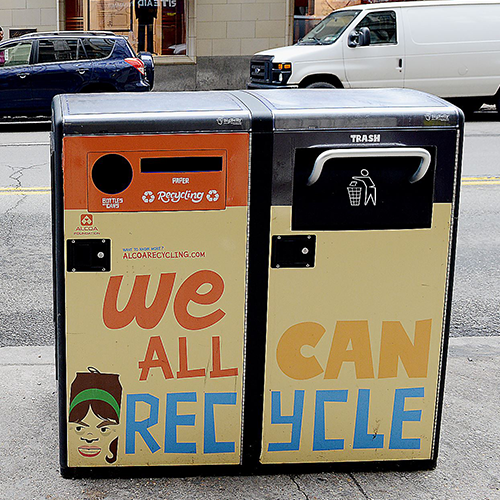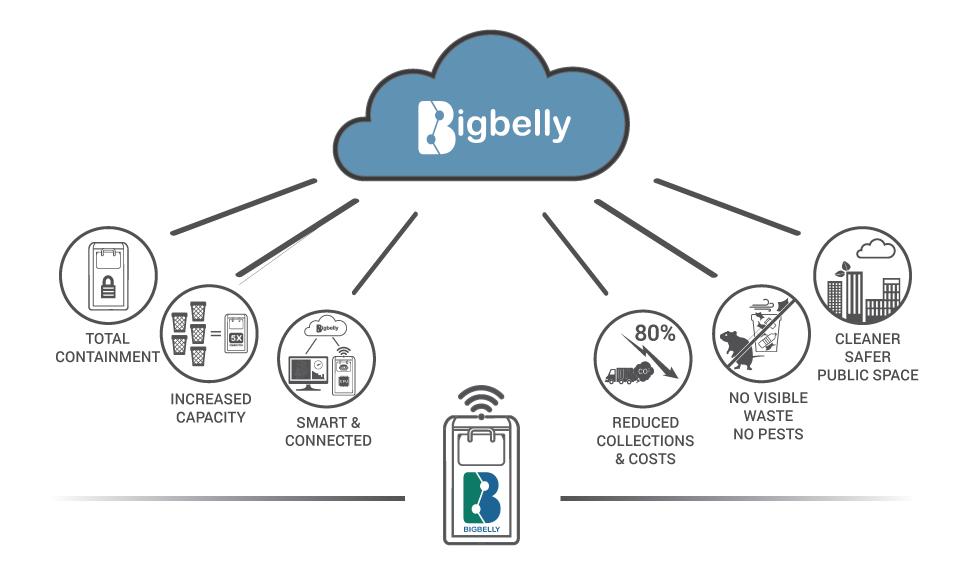 It’s an unsightly spectacle that’s all-too familiar, bins overflowing with rubbish, littering the landscape from city streets to local beaches with mountains of plastic bottles, newspapers, take-away meal containers and everything in between.
It’s an unsightly spectacle that’s all-too familiar, bins overflowing with rubbish, littering the landscape from city streets to local beaches with mountains of plastic bottles, newspapers, take-away meal containers and everything in between.
But now, Solar-powered rubbish crunching litter bins are being tested by a Cambridgeshire council. They are much more expensive at just over £3,000 per bin, instead of £1,000 but take 800 litres as opposed to 100 litres on the normal bins and they also encourage recycling with separate compartments,” explained Councillor Mike Pitt.
Cambridge City Council is one of the first authorities in England to try out the bins.Mr Pitt is the executive councillor for environmental and waste services and he hopes the bins will prove their worth during the summer months in particular.”Think about the hot spots in the summer. If we had these bins they could be able to take more litter and deal with the extra capacity on those days,”
It was from the mounting piles of rubbish that a group of engineers saw the opportunity. After learning that Rubbish trucks are one of the most costly vehicles to operate, they consume over 1 billion gallons of diesel fuel each year in the USA alone and limp along getting an average of 2.8 miles to the gallon. The team formed a company to take on the growing waste management problem and design a new kind of trash receptacle.
BigBelly Solar had a few very specific design goals:
- The Rubbish compactor had to be around the size of a normal receptacle so it could easily fit street-side.
- The unit had to process larger quantities of trash to reduce the frequency of garbage pickup.
- It had to be standalone so it could derive power from an alternative energy source. Wind was quickly ruled out because the energy source wasn’t constant and it was too dangerous to have wind turbines lined up across city streets.
When you’re aiming for the street corner, there are a lot of limitations as to what you can use for power. In order to run an electrical line to a standard outlet, you’re talking about thousands of pounds of investment for each location just to provide power there. (As a result), the whole value proposition of cost savings around not collecting trash goes out the window because you’re paying so much to install the unit.”
None of that was the case with solar power. While there were no major breakthroughs in solar panel technology that led to BigBelly Solar’s decision, the timing pointed to solar energy as the natural path to choose. Other solar, so-called off-grid applications were being introduced, including Solar Powered Parking Meters and Solar Powered Traffic signals which underscored the effectiveness of this power source for BigBelly’s trash compactor application.
“Solar applications are becoming more acceptable everyday technology,” “There are solar panels on calculators and walkway lights. It’s something people are starting to see more and more on things other than rooftops.”
“Helping to provide design solutions to difficult problems is everything SOLIDWORKS is about, and this is a great example” Said Mark Bradford, Managing Director of Innova Systems.
Back to the Drawing Board
BigBelly was committed to delivering the Rubbish Bin compactor as a smaller, self-contained unit, it needed to rethink the design for a fresh approach that demanded less energy. “If the design team didn’t take steps to minimise energy consumption, the whole idea of a solar-powered trash compactor would be a total failure. The size of the panel needed to power the system would be the size of a wall and that would defeat the whole purpose of having one self-contained unit.”
Armed with SOLIDWORKS, the BigBelly engineering team went back to the drawing board to rethink its design in a way that would best leverage solar power. Drawing inspiration from the simplicity of a bicycle chain, the BigBelly team created a drive chain mechanism to propel the compaction system, which in turn uses no hydraulic fluids and consumes minimal energy. As a result, the BigBelly trash compactor is powered by a 30W solar panel, which measures 18 inches by 22 inches. Just the right footprint to accommodate the design goal of creating a self-powered, self-contained unit.
The next step was to optimise every component choice and all materials for efficient energy consumption. The BigBelly receptacle features a monitoring system comprised of a microprocessor, circuit board and infrared emitter and sensor, which determines when the trash needs to be compacted and collected. The design also calls for a multicrystalline solar photovoltaic module used to collect the sun’s energy for subsequent storage in a 12V battery. That’s where the chain mechanism and gear motor kick in. They leverage the stored energy and transform it into compaction power.
The choice of materials was also a major design challenge. When the price of steel went up early in the design process, the BigBelly team and its outsourced partners embarked on a major effort to remodel the early prototype to reduce the amount of steel parts, both to make the unit more price competitive and in keeping with an eco-design focus. Using SOLIDWORKS’ sheet metal features and the finite element analysis features of Simulation Xpress, the BigBelly unit was re architected with 30 percent fewer steel parts.
Other materials choices included a Lexan polycarbonate cover to protect the solar panels on the top of the trash barrel. While the polycarbonate blocks out minimal amounts of the solar radiation, it was a better design tradeoff than leaving the panels exposed to the elements.
 SOLIDWORKS’ eDrawings email-enabled viewing and communications tool also played a key role in the on-going development effort. Using eDrawings, the BigBelly team was able to send 2-D drawings and 3-D models back and forth with both its outsourced design and manufacturing partners, a process which kept everyone on the same page and speaking the same language when it came to the product’s evolving design.
SOLIDWORKS’ eDrawings email-enabled viewing and communications tool also played a key role in the on-going development effort. Using eDrawings, the BigBelly team was able to send 2-D drawings and 3-D models back and forth with both its outsourced design and manufacturing partners, a process which kept everyone on the same page and speaking the same language when it came to the product’s evolving design.
The ability to send lightweight 3-D models back and forth with the eDrawings tool really helped BigBelly and its manufacturing partners, meet the company’s tight production and launch deadlines, Rather than the time-consuming process of sending memory-intensive CAD files over the Internet, the teams were able to share smaller eDrawings files in a timely fashion, which aided in identifying and modifying potential areas of interference. That was especially the case with some of the initial sheet metal designs, which proved not to work properly with suppliers press break tooling.
Today, there are over 1,700 BigBelly solar trash compactors spread across the U.S. and the world, At 150kg and about the same height and width of an average receptacle, BigBelly compresses the equivalent of five trash cans into a single receptacle, which helps companies and municipalities avoid four out of five Rubbish collection trips.
The newest iteration of BigBelly launched last year and the company is planning new designs, including a dumpster-sized system and adding new technology that communicates information wirelessly back and forth between the unit and its owner. In this way, customers can get a sense of when a BigBelly unit is full and arrange trash pickup accordingly.
All of these innovations wouldn’t be possible without SOLIDWORKS driving the iterative process. Big Belly designers say “Given that we’re a mature product now, if we didn’t have SOLIDWORKS to try out new ideas and see how they fit with our robust design, we wouldn’t be able to try many different changes and get out product to market in time.
“This is a fantastic design story” said Mark Bradford, Innova Systems Managing Director. “How a new company researched a problem, developed an innovative solution using SOLIDWORKS, that costs more to purchase initially, but produces a compelling return on investment for the purchaser and helps the environment in the process. We congratulate the team the Big Belly Solar. As a leading Supplier of SOLIDWORKS based in Cambridge where the trials are underway, we will follow the trials with great interest”


















